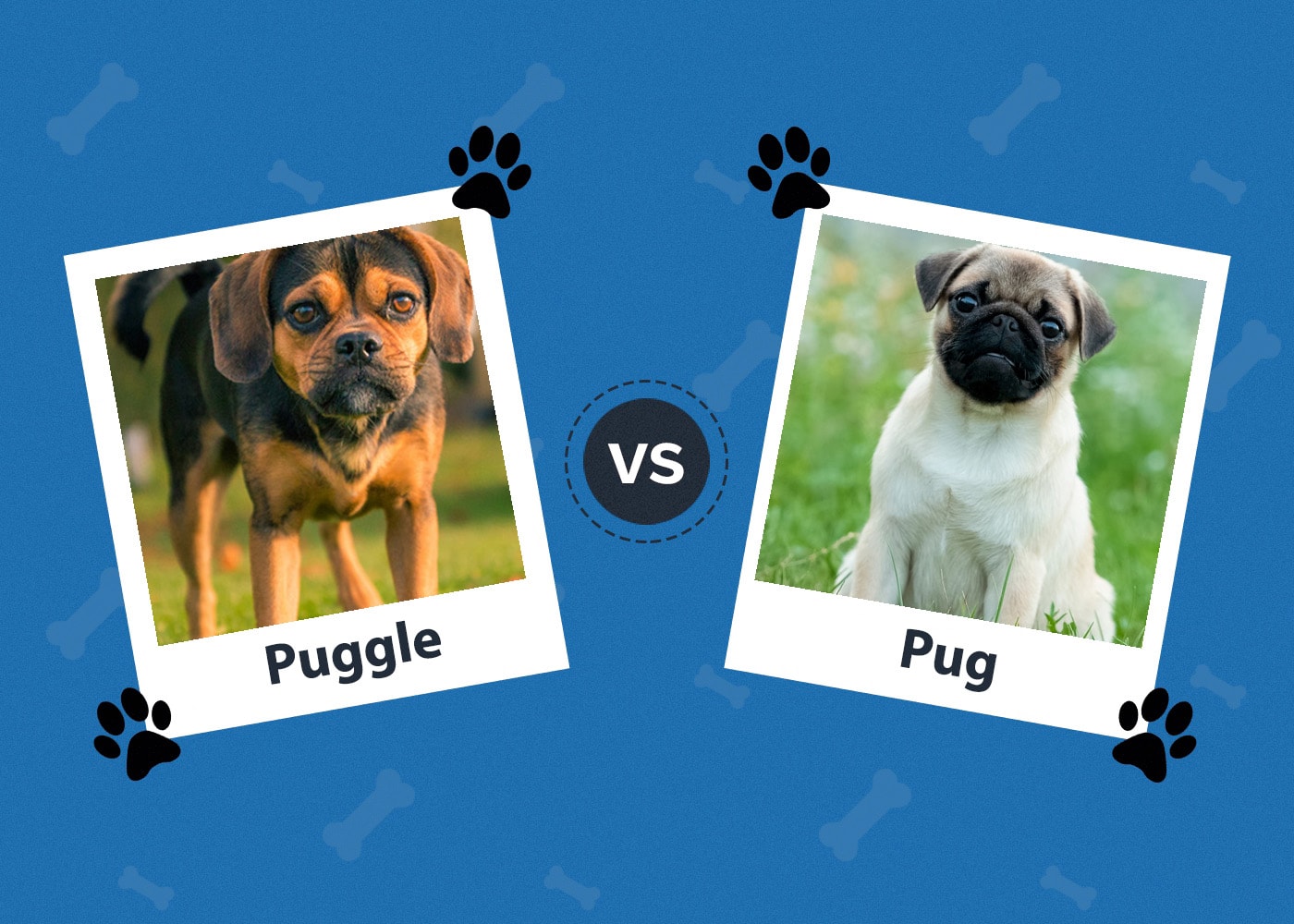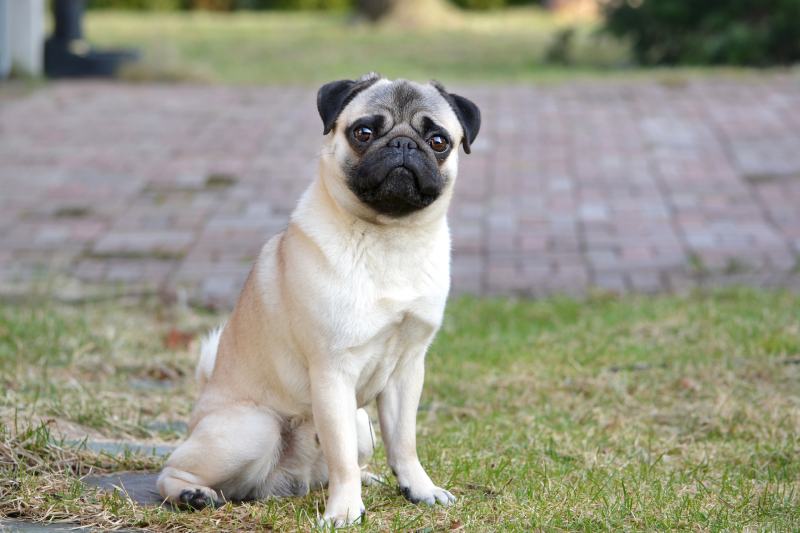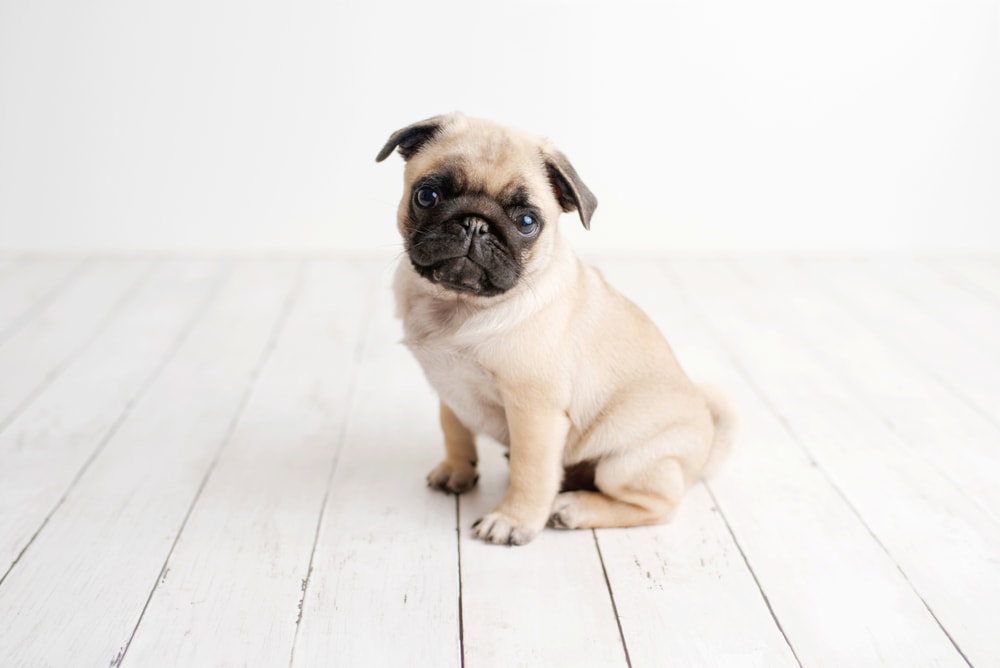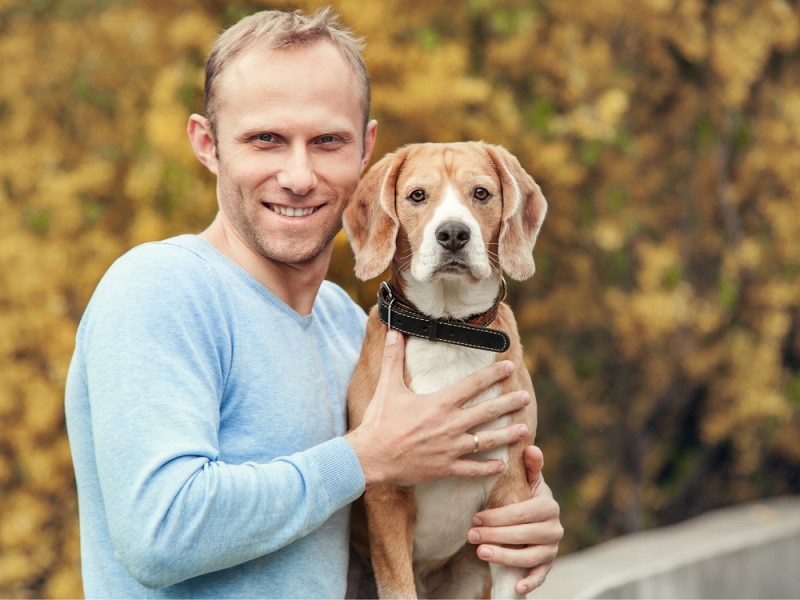Puggle vs Pug: The Main Differences (With Pictures)
Updated on

Click to Skip Ahead
Puggles and Pugs are extremely different. Pugs are a rather popular smaller dog breed that is known for working well in apartments and without much exercise. Puggles are actually half-pug. However, one of their parents is a Beagle, which does lead to a range of different traits. Still, because these two breeds share at least half their genes, their differences are as significant as some others.
That said, if you’re trying to choose between these two breeds, these smaller differences can become important. It’s vital that you consider which breed might fit into your life easier, which we’ll help you do below.
Visual Differences

At a Glance
- Average height (adult): 10–15 inches
- Average weight (adult): 15–30 pounds
- Lifespan: 10–15 years
- Exercise: Moderate
- Grooming needs: Low to Moderate
- Family-friendly: Yes, very
- Other pet-friendly: Yes, very
- Trainability: Low
- Average height (adult): 10–13 inches
- Average weight (adult): 14–18 pounds
- Lifespan: 12–15 years
- Exercise: Moderate
- Grooming needs: Low to moderate
- Family-friendly: Yes, very
- Other pet-friendly: Yes, very
- Trainability: Low
Puggle Overview

Puggles are a cross between a Pug and a Beagle. For this reason, they tend to vary widely. You never know what genes they’re going to inherit from which parent, so purchasing a Puggle puppy is a game of chance in some part.
That said, there are some traits that this breed tends to have.
Appearance
Puggles are typically somewhere between a Pug and a Beagle when it comes to their appearance. They’re often very sturdy and compact. They can be very athletic in some cases, and their backs can be a bit longer than the average dog.
Their coats are usually short and dense. It often sheds quite a bit, so regular brushing is highly recommended for this breed. They can come in a range of different colors thanks to their mixed heritage.
They often have at least a partially pushed-in nose, though the length can vary widely. Those with longer snouts tend to have fewer breathing problems. Their ears are often floppy, though they’re usually shorter than the average Beagle.
Temperament
These dogs are bred purely as companion animals. Therefore, they’re often very friendly and socialized. When properly socialized as a puppy, these dogs tend to get along well with anyone. They usually love to be around people and may be prone to separation anxiety. Therefore, teaching them how to be alone from a young age is important.
They’re often very curious, and they may have some of the hunting instincts of a Beagle. They may try to follow a trial or two, and their prey drive can be significant.
Puggles are pretty adaptable, which is a key trait of both their parent breeds. They tend to work well no matter where you live, assuming you meet their other needs. They aren’t skittish or aggressive in practically all situations.
Their playful nature makes them well-suited to homes with children. Their sturdy body also makes them a good match for younger children.
Intelligence and Training
Puggles aren’t the most intelligent dogs. However, they can be pretty clever, and they often have a high emotional intelligence. In other words, they’re pretty good at figuring out what their humans are thinking and feeling, which naturally makes them good companion dogs.
However, they can also be very stubborn. They weren’t bred for obedience, so they often don’t listen to every command. Even if they know what you want, that doesn’t mean that they’ll do it. They prefer to think for themselves.
That said, consistent and positive training can work wonders for this team. We highly recommend getting them in classes early and training consistently.

Health Considerations
As a mixed breed, Puggles tend to be pretty healthy. This fact is because “mutts” inherit from a wider gene pool. Therefore, they’re less likely to inherit genetic conditions. (In a more straightforward way to put it, mixed breeds are less inbred.)
However, they can still develop the same health issues that either of their parents are prone to. For instance, they may have breathing issues, especially if they have a shortened snout. They may also develop back issues if their back is longer, like a Beagle’s.
Vet checkups can help reduce the chance of some issues. However, on other occasions, there won’t be anything you can do about them.
Suitable for:
Puggles are great first-time dogs for those with children. Their friendly and sociable nature allows them to get along well with just about anyone. They can have varying degrees of energy, so be sure you have the bandwidth to provide plenty of exercise if necessary. As companion dogs, Puggles are perfect for those who want an affectionate canine.
Pug Overview

Pugs are not a mixed breed, which means that their traits are a little more set in stone. They’re extremely popular and often one of the more recognizable dog breeds. Therefore, even if you’ve never owned a Pug, you probably know what one looks like! Their distinctive wrinkled faces and curled tails make them pretty obvious.
However, before adopting one of these charming Pugs, there is a lot you need to keep in mind.
Appearance
Pugs have a very compact, muscular body. Their most predominant features all show signs of “shrinkage,” including their shortened muzzle and tightly curled tail. In most cases, their coats are very short and smooth. It typically sheds a moderate amount, though these dogs often don’t need much brushing.
These dogs come in a range of different colors, ranging from fawn to black. Like many companion dogs, they’re bred to come in many different colors to suit their owners’ fancy.
Pugs often look very cute, which is one of the driving forces of their popularity.
Temperament
Pugs are renowned for their companionable temperament. They were bred to be friendly and sociable, which tends to make them very good pets. They’re very affectionate, forming strong bonds with their human family and practically everyone they meet. They’ve never met a stranger and get along with just about everyone, especially when well-socialized.
They’re very playful dogs, though they are not exceedingly active. They like to be walking around and doing things, but they will be walking, not running. Their shortened snouts make it impossible for them to do much moderate to intense exercise, so you’ll find them mostly lounging around the house.
Intelligence and Training
Pugs were never bred to be very obedient. While they can be charming, they aren’t the smartest dogs, so training may take a bit longer than for other breeds. Thankfully, these dogs are pretty well-behaved naturally, so they don’t need tons of training. Their smaller size also makes them pretty manageable, even without tons of training.
They can be independent, which can come across as stubborn. However, these dogs just weren’t bred for a high level of obedience. Instead, breeders were focused on their friendliness. Typically, companion dogs don’t need to learn tons of commands, so they aren’t bred to be as obedient and intelligent as a German Shepherd or Golden Retriever might be.
With careful and consistent training, though, your Pug can learn all of the basic commands. Their tendency to bond deeply with their owner can make them easier to train than some other dog breeds, as well.

Health Considerations
Pugs are one of the least healthy dog breeds out there. Their unique physical traits also make them prone to a range of health problems. Their shortened snout means they’re brachycephalic, which is a big word that means they cannot breathe properly. This issue makes them prone to many complications, such as heat exhaustion and problems with anesthesia. These dogs often aren’t allowed on airplanes for this reason.
Obesity can be a huge issue since this breed cannot exercise properly. Extra weight can also make it harder for them to breathe, which in turn makes it harder for them to exercise. Careful feeding is vital to keeping a Pug healthy, as you cannot rely on exercise.
Their curled tail may be linked to spinal malformations. These conditions are congenital, which means the puppy is born with it. Simply put, the twisting of the tail may continue into the spine, which, of course, can cause problems for the dog. The degree of curl is associated with the chance of spinal problems. In other words, the curlier the tail, the more likely the dog is to have spinal issues.
A Pug’s oversized eyes can also be a problem. They pop out of their sockets a bit more than other dogs, which can make them more prone to injury. Pugs are particularly troublesome in households with cats, as they can be more prone to scratched eyes. Dust and other irritants will also affect their eyes more than other dogs.
Pugs may be adorable dogs, but practically everything that is considered a Pug feature is also connected to health issues. To avoid these, you’ll need to carefully choose a responsible breeder who is focusing on the health of the breed, not just the “cute” factor.
Suitable for:
Pugs are perfect apartment dwellers for first-time owners if you can get over the health issues. They can be good with children and are very adaptable, especially when socialized. They’re even good for elderly individuals due to their affectionate nature and relaxed demeanor. They won’t have a high exercise need, so they’re best for more laid-back families.
That said, be sure you have a decent health budget available for these dogs. They tend to be especially unhealthy and may require higher vet bills.
Which Breed is Right for You?
Most people looking for a laid-back companion dog will have an easier time finding a Pug. Puggles are one of the more popular mixed breeds, but they are not labradoodles. Finding quality breeders that specialize in Puggles is exceptionally challenging.
Therefore, in many cases, you may need to choose a Pug due to purely practical reasons.
That said, if you do happen to have a Puggle breeder nearby, they tend to be healthier and more active than Pugs. They’re also much more varied, so Puggles aren’t the best for those who want to know exactly how their dog will be when grown.
See also:
- German Wirehaired Pointer vs Deutsch Drahthaar: The Differences (With Pictures)
- Miniature Pinscher vs. Chihuahua: The Main Differences (With Pictures)
Featured Image Credit: Left:(Puggle) Fluechter Photography, Shutterstock, Right: (Pug) Inheart, Shutterstock











